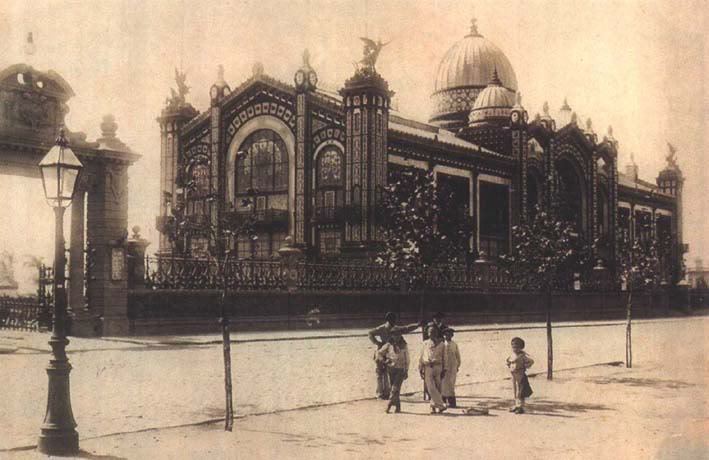 | ||
The Exposición Internacional del Centenario was an exhibition held between May and November 1910 in Buenos Aires, to mark the centennial of the May Revolution in Argentina (the formation of the first local government on May 25, 1810). With a population of around 1.2 million, Buenos Aires was then the largest urban complex in Latin America, the eighth city in the world, and one of the richest. As the capital city and main port of the young Argentine Republic at the height of its economic expansion, the city was growing rapidly with the successive waves of European immigration.
The exhibition had various themes:
Agriculture and Cattle Raising - this was housed in a pavilion within the grounds of La Rural in Palermo and contained an exhibition of agricultural activities and products from various parts of the country.
Industry - this was located on what today is Libertador Avenue and featured industrial machinery much of which had never been seen before in Argentina.
Railways and Overland Transport - an exhibition of the latest automobiles from Europe, yachts, aeroplanes, railway locomotives, carriages and wagons was located near the hipodrome in Palermo.
Hygiene - this was located on a site now occupied by Argentine National Library.
Fine Arts - this was located in a pavilion designed by the French architect Albert Ballu and was situated in Plaza San Martín, opposite the Plaza Hotel. The building was a steel structure covered in ceramics and multi-coloured glass and was first erected as the Argentine pavilion in the 1889 Paris exhibition, where it stood next to the newly built Eiffel Tower.
In addition there were pavilions for several of the Argentine provinces, including Córdoba, Mendoza, Salta, Jujuy and Tucumán, and for countries including Spain, Italy, Germany, England, Switzerland, Austro-Hungarian Empire and Paraguay. The Art Nouveau style played an important role in the designs of many of the buildings.
A number of young Italian architects, including Virginio Colombo, Francisco Gianotti and Mario Palanti who designed the Italian pavilion, went on to establish successful careers in Buenos Aires working in a number of styles, including Art Nouveau. Their buildings were some of the most important of the 20th century in Buenos Aires and those that remain continue to play a significant role in defining the city's architectural landscape.
